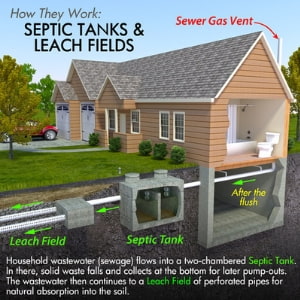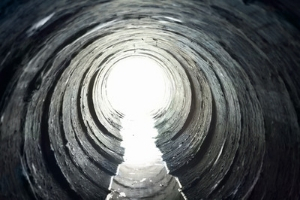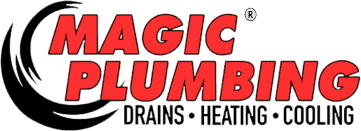Where is Your Plumbing Waste Going When it Leaves Your Home?
When most people think of sewers, they think of scenes from movies and cartoons that feature a smelly underground river with rats and snakes, and all manner of nasty things. But what actually happens to your household waste when it leaves your home? Where does it go? How is it treated?
The Sewer and drain cleaning experts at Magic Plumbing did some digging to answer some questions about household sewage. Here’s what we’ve found out:
Do You Live in a House With a Septic Tank?
 If you live in a rural area, your household plumbing waste may be treated by an independent septic system.
If you live in a rural area, your household plumbing waste may be treated by an independent septic system.
Consisting of two parts, the tank, and the drain field, septic systems treat water by collecting wastewater that runs into the tank from your homes drain lines. Here the waste separates into three parts:
Sludge (solid waste that collects at the bottom of the tank), Scum (grease and oils that gather near the top of the tank), and effluent (the remaining wastewater).
Once the waste has been separated, the effluent exits the tank through field lines into the drain field. In the drain field, the effluent filters through various layers of soil and is naturally treated by coliform bacteria, viruses, and nutrients until it returns to groundwater.
Are You Connected to a Larger Sewer System?

In more urban areas, like cities, central sewer systems treat the waste from every home in a single municipal water treatment plant.
The wastewater from your home flows into the main sewer pipe that runs down the middle of your street, where it begins its journey to the plat.
Once there, the wastewater is treated in 3 stages:
- Primary Treatment- Grease and solid waste are separated out of wastewater, just like in a septic tank.
- Secondary Treatment- Wastewater is passed into an aeration tank where aerobic bacteria consume organic waste and nutrients in the water.
- Tertiary Treatment- Harmful elements like phosphorus and nitrogen are removed from the water by chemicals that are added during this step. Chlorine is also added to kill any remaining bacteria.
Other Kinds of Waste Disposal
 Most homes that are connected through their sewer system to a city sewer pipe employ gravity drains in their waste disposal. Gravity drains are sloped so that the wastewater runs downhill, to the sewage plant and away from your home.
Most homes that are connected through their sewer system to a city sewer pipe employ gravity drains in their waste disposal. Gravity drains are sloped so that the wastewater runs downhill, to the sewage plant and away from your home.
Within these systems, there are things called pumping stations, where the waste has to be lifted by a pump into the next gravity drain pipe.
Cities that treat sewage electrically in their plants may use rotating disks to aerate the water during secondary treatment, or they may aerate the water by pumping it onto large plastic pipes called media, or using air blowers that bubble air through the wastewater.
In rural areas, the alternative to a septic tank is a cesspool, which is similar to a septic tank, only they don’t use a drain field to treat the wastewater. Cesspools are pits in the ground that are often lined with brick or cement blocks, so that when the effluent can filter out through the lining of the cesspool directly into the soil.
Call Magic Plumbing today at (414) 441-2255 for sewer or drain cleaning in San Francisco!


